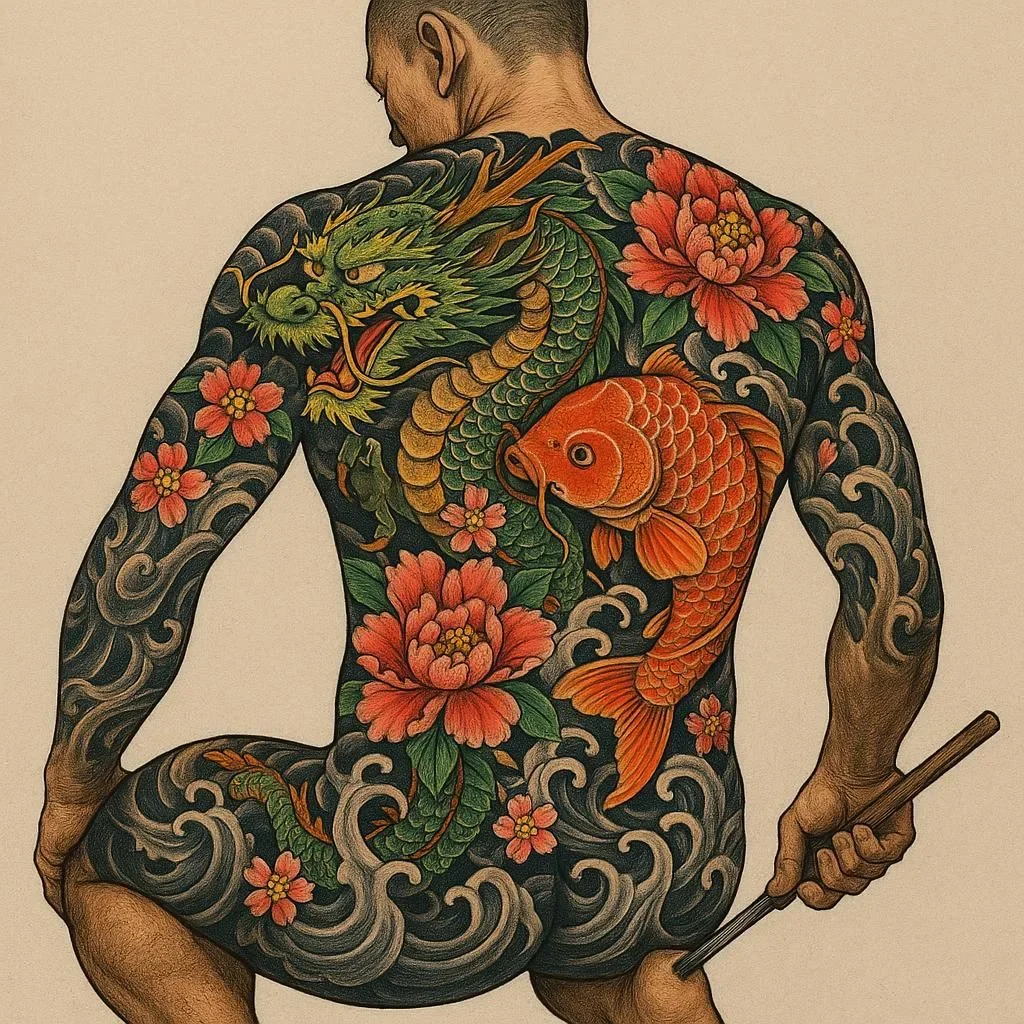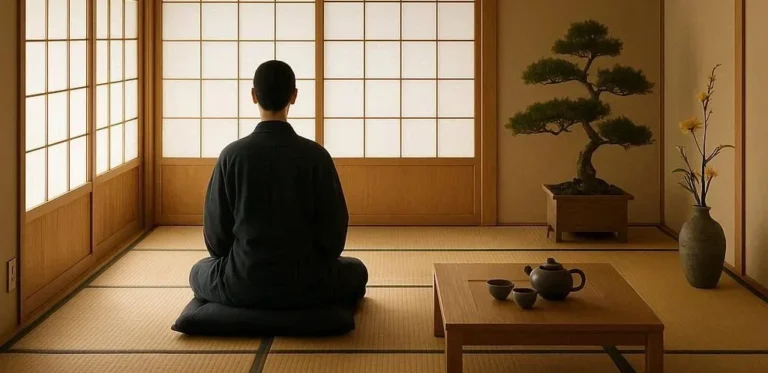505 views The Tattoo Culture of the Yakuza: Myths and Reality
Tattoos have long been a fascination in global culture, with each design carrying its own unique history, meaning, and significance. Among the most intriguing and misunderstood tattoo cultures is that of the Yakuza, Japan’s infamous organized crime syndicates. For decades, the Yakuza have been associated with elaborate, full-body tattoos that are as striking as they are steeped in tradition. But how much of what we know about Yakuza tattoos is fact, and how much is myth? In this blog post, we’ll delve into the rich history, cultural significance, and modern realities of Yakuza tattoos, separating the truths from the legends.
A Brief History of Yakuza Tattoos
The origins of Yakuza tattoos can be traced back to the Edo period (1603-1868), when Japanese society was heavily influenced by the samurai class and the strict codes of conduct known as “bushido.” During this time, tattoos were not as stigmatized as they later became, and they were often used to signify status, loyalty, and strength. The Yakuza, emerging as a criminal underworld, adopted tattoos as a way to distinguish themselves from others and to convey their allegiance to their respective gangs.
Over time, Yakuza tattoos evolved into intricate works of art, often covering large portions of the body, including the back, arms, and legs. These tattoos were not simply decorative; they carried deep symbolic meaning, representing the individual’s history, rank within the organization, and even their criminal record. For example, a dragon tattoo might symbolize strength and courage, while a phoenix might represent rebirth and resilience.
The Mythology Surrounding Yakuza Tattoos
Much of what the general public knows about Yakuza tattoos comes from popular culture—movies, books, and media that often sensationalize the Yakuza lifestyle. One of the most enduring myths is that all Yakuza members are heavily tattooed, and that tattoos are a mandatory part of initiation into the organization. While it’s true that tattoos have historically been a significant part of Yakuza identity, not all members are tattooed, and the practice has become less prevalent in modern times.
Another myth is that Yakuza tattoos are solely for intimidation or to showcase criminal prowess. While it’s true that tattoos can serve as a visual marker of a person’s affiliation with the Yakuza, they also hold a deeper cultural and personal significance. Many tattoos are commissioned to commemorate important events, express personal beliefs, or honor one’s heritage.
Perhaps the most pervasive myth is that Yakuza tattoos are illegal in Japan. While it’s true that tattoos carry a stigma in Japanese society and are often associated with organized crime, they are not outright illegal. However, the association between tattoos and the Yakuza has led to widespread discrimination against tattooed individuals in Japan, with many public bathhouses, gyms, and pools refusing service to those with visible tattoos.
The Reality of Yakuza Tattoos Today
In recent years, the Yakuza’s influence in Japan has begun to wane, and with it, the tradition of tattooing has also declined. Many younger Yakuza members have abandoned the practice of getting tattoos, opting instead for more discrete forms of identification, such as small, easily concealable tattoos or no tattoos at all. This shift is largely due to the increasing pressure from law enforcement and the desire to blend into mainstream society more easily.
Despite this decline, Yakuza tattoos remain a significant part of Japanese cultural heritage. Many of the traditional tattoo designs and techniques used by Yakuza members have been preserved and passed down through generations of tattoo artists, known as “horishi,” who specialize in the ancient art of Japanese tattooing. These artists continue to create stunning, intricate designs that are highly sought after by tattoo enthusiasts around the world.
The Role of Tattoos in Yakuza Culture
Within Yakuza culture, tattoos have traditionally served a variety of functions. They are not only a form of self-expression but also a means of communicating status, loyalty, and identity. For example, a member’s rank within the organization might be indicated by the size and placement of their tattoos, with higher-ranking members often having more extensive and elaborate designs.
Tattoos are also used to tell a person’s story, with each design element representing a specific event, value, or belief. For instance, a snake might symbolize good luck and longevity, while a wave might represent the unpredictable nature of life. Additionally, tattoos can serve as a form of punishment or restitution, with some members being forced to have certain designs tattooed on them as a form of discipline.
Perhaps most importantly, tattoos are a symbol of the Yakuza’s code of honor, known as “giri,” which emphasizes loyalty, respect, and the importance of maintaining one’s reputation. The process of getting a tattoo is itself a test of endurance and commitment, as traditional Japanese tattoos are still done by hand, using a technique called “tebori,” which involves puncturing the skin with a needle attached to a wooden or bamboo handle.
The Decline of the Yakuza and the Future of Their Tattoos
In recent years, the Yakuza have faced significant challenges, including increased crackdowns by law enforcement, internal power struggles, and the decline of their traditional revenue sources, such as gambling and extortion. As a result, the Yakuza’s influence in Japanese society has diminished, and with it, the cultural significance of their tattoos has also begun to fade.
However, the art of Yakuza tattooing continues to thrive, albeit in a different form. Many of the traditional techniques and designs that were once exclusive to the Yakuza have been adopted by tattoo artists around the world, making Japanese-style tattoos some of the most popular and sought-after designs today. Additionally, the rise of tattoo tourism in Japan has allowed enthusiasts to experience the rich history and beauty of Yakuza tattoos firsthand, even if the original context in which they were created has largely disappeared.
Despite the challenges they face, Yakuza tattoos remain a fascinating and important part of Japanese cultural heritage. They represent not only the history and traditions of the Yakuza but also the broader cultural values of Japan, such as honor, loyalty, and resilience. As the world becomes increasingly connected, it’s likely that Yakuza tattoos will continue to evolve, blending traditional techniques with modern sensibilities to create a new generation of tattoo art that honors the past while embracing the future.
Conclusion
The tattoo culture of the Yakuza is a complex and multifaceted phenomenon that continues to captivate audiences around the world. While much of what we know about Yakuza tattoos is influenced by myths and stereotypes, the reality is far more nuanced and fascinating. From their historical origins to their modern-day significance, Yakuza tattoos offer a glimpse into a world that is both familiar and foreign, where tradition and modernity collide.
As we move forward in an increasingly globalized world, it’s important to approach the subject of Yakuza tattoos with respect and an open mind, recognizing both their cultural significance and the challenges they face in contemporary society. Whether you’re a tattoo enthusiast, a history buff, or simply someone curious about the intricate art forms of Japan, the story of Yakuza tattoos is one that is sure to leave a lasting impression.







